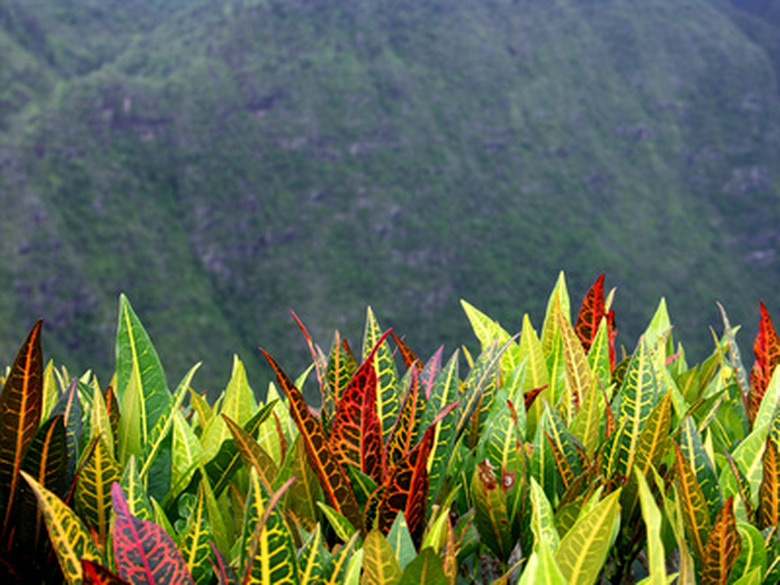Croton Diseases
Originally hailing from Indonesia, the croton plant is a colorful shrub that can be raised in USDA hardiness zones 10A through 11. The shrub's profusion of red, orange, yellow and green leaves makes it a popular accent piece in a landscape. Though insect pests rarely afflict this hardy plant, it can occasionally succumb to a variety of diseases usually because of bacteria- or fungus-related growth.
Powdery Mildew
Powdery mildew causes a thin coat of gray or white dust on the top or bottom surfaces of the croton's leaves. Without treatment, the mildew can cause more than just aesthetic problems, but also stunted foliage development. The problem can be corrected by reducing the relative humidity in the area if the croton is grown indoors. Outdoors, avoid spraying the plant's leaves with water. Chemical treatments like neem oil and potassium bicarbonate can kill this disease.
- Originally hailing from Indonesia, the croton plant is a colorful shrub that can be raised in USDA hardiness zones 10A through 11.
- Powdery mildew causes a thin coat of gray or white dust on the top or bottom surfaces of the croton's leaves.
Oedema
Oedema is often called a disease, though it's related to poor management strategies rather than an external factor such as bacteria or fungi. It occurs when the croton plant starts absorbing more water through its roots than it can release or use. Symptoms include blisters forming on the croton's colorful leaves. Failing to treat this problem can result in widespread foliage loss. Reduce your watering sessions until the symptoms disappear.
Crown Gall
The bacteria behind the crown gall disease stimulate thick, swollen growths on the croton's stems and the veins of its leaves. The University of Florida recommends promptly cutting down and discarding any crotons that exhibit this disease to prevent it from spreading to other croton plants.
- Oedema is often called a disease, though it's related to poor management strategies rather than an external factor such as bacteria or fungi.
- The University of Florida recommends promptly cutting down and discarding any crotons that exhibit this disease to prevent it from spreading to other croton plants.
Anthracnose
Anthracnose, sometimes referred to as leaf spot or blight, is a bacterial disease that makes tan-colored dead spots on the croton plant's leaves. Cut off any infected foliage and avoid letting the leaves touch other plants, since this may spread bacteria spores. Serious cases of anthracnose can be treated with a standard copper-based garden fungicide.
References
- "Ornomental Tropical Shrubs"; Amanda Jarrett; 2003
- University of Florida: Croton Production Guide
